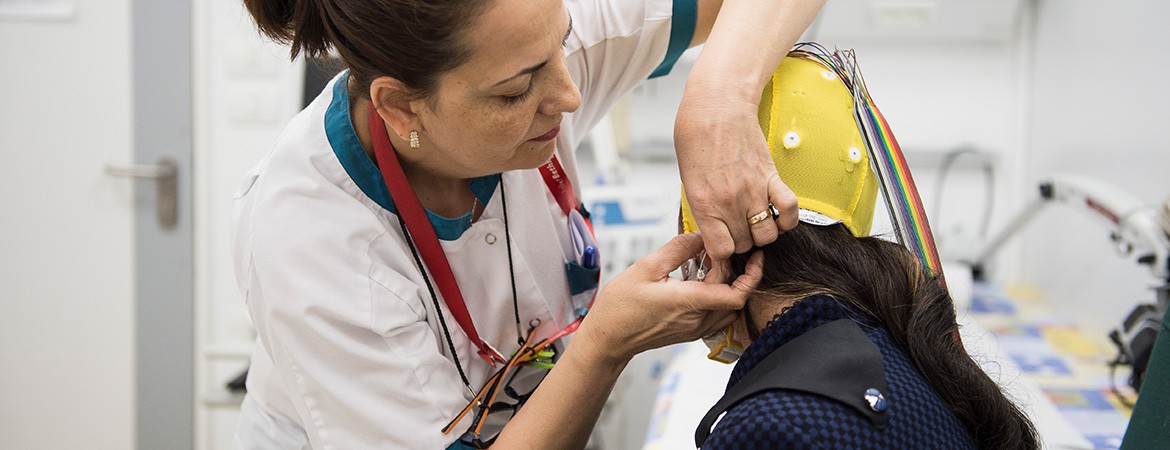- Electroencephalogram (EEG):
An electroencephalogram (EEG) is a test for determining problems related to the electrical activity of a child’s brain by tracking and recording brain wave patterns. Results of brain activity testing are transmitted to a computer via electrodes placed on the child’s scalp. The specialist doctor looks for abnormal patterns that indicate seizures or other neurological disorders in the patient, such as epilepsy, head injuries, and sleeping problems.
- Electromyography (EMG):
A test that looks at the way a child’s muscles and nerves work together. Nerves carry messages to and from the muscles and in case of a neurological disorder, the child’s nerves or muscles might be damaged, causing dysfunction in the muscles. Muscle movements are tested by connecting them to a computer via needles inserted in the muscles. The computer will record the electrical activity in these muscles, which will allow the specialist doctor to determine a diagnosis and the appropriate treatment. An EMG can help the diagnosis of a number of neuromuscular and muscular disorders, including muscular dystrophy (polymyositis), Myasthenia Gravis, Carpal tunnel syndrome (peripheral neuropathies), Amyotrophic lateral sclerosis (polio), as well as herniated disk disease.
- Nerve Conduction Velocity (NCV):
A nerve conduction velocity (NCV) test serves to assess nerve damage and dysfunction in a child. Nerve activity is measured through connecting electrodes placed on the skin that capture and record the speed at which small electrical currents travel through the nerves. Results allow the specialist doctor to diagnose the cause of many neuromuscular and muscular disorders including Guillain-Barre syndrome, Carpal tunnel syndrome, Charcot-Marie-Tooth (CMT) disease, herniated disk disease, chronic inflammatory polyneuropathy and neuropathy.

